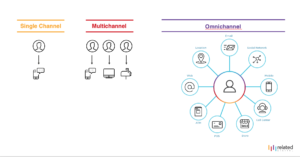5 Types of Popups to Boost Your Website Traffic and Revenues

Popups can be either effective or annoying depending on whether you use them well or not.
Good popups don’t disturb your visitors. They offer relevant content, and appear on a relevant page. And they can convert up to 40% of your website visitors into subscribers and leads.
First, what’s a ’good popup’? A good popup:
- Appears when it’s least disturbing
- Is relevant to your audience and the page they are viewing
- Provides an attractive offer for the audience
- Improves your conversions
You can use discounts, coupons, free stuff, exclusive offers only to visitors who have signed up for your newsletter, contests to persuade your visitors to stay on your page, and to sign up.
But you can’t communicate the same message to visitors in different stages of the lifetime cycle.
Timing is Critical
Timing the key aspect to get the results you want but it is usually overlooked. The best way to improve popup conversions is by displaying them when a visitor is the most susceptible to your message at the right time to the right audience.
If you display a popup too soon, you can lose your visitors because they will interrupt their experience on a page. If your popups display too late, you can lose many new subscribers because they might leave the site without reading your message.
But how can you know the ideal popup timing?
Do’s and Don’ts
You shouldn’t offer to download a free ebook to customers who are about to pay for the items in their cart, but, suddenly, try to leave your site. You can display them a popup with a special discount or free shipping offer so they will complete the shopping. Or, if you are selling electronic equipment, you shouldn’t promote your free case offer for each laptop on the product pages of washing machines. You should have different popups for each page.If your visitors are seeing the popup again and again each time they visit your website, it could be irritating for them. So, you should pay attention when you’re setting up timings for popups
This article will discuss the five types of popups you can use on your site.
Timed Popups
Timed popups should only be triggered when a visitor has sufficiently understood your website content. Knowing the average time customers spend on your page and determining the best timing will prevent making many timing mistakes.
Scrolling is another aspect that can be used to analyze a person’s interest in the content. If a visitor is scrolling, this means she has already received value from your content and are less likely to get annoyed by your popup.
And if you display scroll popups in your website, that’s even better.
Scroll Popups
Scroll popups appear when a visitor has scrolled down a certain percentage (let’s say 70%) of your page or article. They help you not to underestimate or overestimate a visitor’s interest in your pages. If you set a scroll popup to appear 70% of the way down your web page, you guarantee the reader is well into the content you offer on that page, but not quite finished. So, even if they aren’t into the popup you display, they’ll likely will not leave the page to finish the content.
Entry Popups
Entry popups are one of the most dangerous popups because they appear as soon as a website has loaded and block the visitor from seeing the page they wanted to.
However, if you use them right, entry popups can be amazing. You can run online or social contests or offer exclusive or limited promotions to encourage customers to get a move on. Shoppers know that the promo will not last long, so they act quickly.
Exit Intent Popups
The next common type of popup, exit popups use “exit tracking” software and mouse-tracking to calculate when a visitor to your page is planning on bouncing.
An exit intent popup appears just as your visitor is about to close your website reminding them an offer they missed or did not know about.
Yes/No Popups
The less information you ask for in the popup, the more visitors will opt in. Typical best practice is to request only the email address or to ask yes/no questions. Here enters the critical role of yes/no popups. For multi-step popups, you can ask for more information. After the first popup raises your visitors’ interest, they’re more likely to provide their contact details (e.g. first name, last name, company name, telephone number, etc.) in the following steps e.g. your landing page. But avoid requesting too much information in the second page because it will reduce your chances for conversion.
You may also like : 5 Tips for Email Segmentation Best Practices


